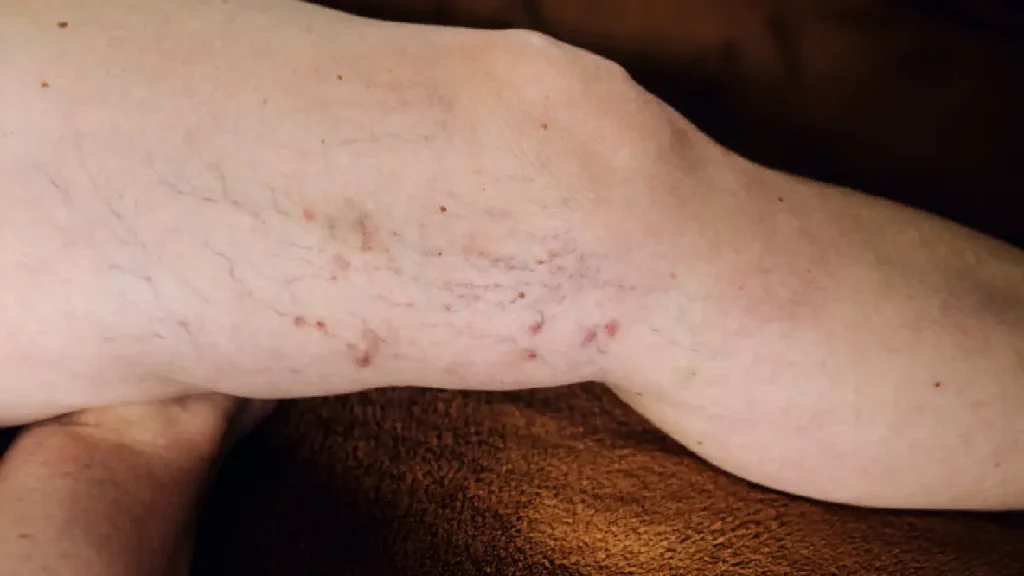What Causes Spider Veins on Legs? Learn How to Prevent Them!
You’re getting ready for a special occasion, excited to wear your favorite dress or a pair of shorts, but as you look in the mirror, your eyes fall on a web of small, discolored veins spreading across your legs. If you’ve ever felt self-conscious about these spider veins, you’re not alone. Many people experience spider veins at some point in their lives. These tiny, twisted veins not only affect your appearance but can also be a sign of underlying venous issues.
At Vein Doctor for Women, we understand the emotional and physical impact that spider veins can have. Our board-certified vein doctors are committed to helping you understand what causes these veins and how you can prevent them. In this article, we explore the causes of spider veins and provide actionable steps to reduce your risk.
What Causes Spider Veins on Legs?
Spider veins, also known as telangiectasias, are small, dilated blood vessels that appear close to the surface of the skin. They often look like thin, red, blue, or purple lines that form a web-like pattern, primarily on the legs and face. These veins occur when the valves inside the veins become weakened or damaged, causing blood to pool and the veins to enlarge. Over time, this pressure causes the veins to twist and become more visible through the skin.
Heredity and Genetics
Genetics is one of the most significant factors contributing to the development of spider veins. If your parents or grandparents had spider veins, there’s a high likelihood that you might develop them, too. Genetics influence the structure and strength of your vein walls and valves, making them more prone to damage and malfunction, leading to the formation of spider veins.
Hormonal Changes
Hormonal fluctuations, particularly in women, play a crucial role in developing spider veins. During puberty, pregnancy, and menopause, the body undergoes hormonal changes that can weaken the vein walls. For instance, the increased levels of estrogen and progesterone during pregnancy can relax the vein walls, making them more susceptible to spider veins. Hormone replacement therapy can also contribute to the formation of these veins.
Prolonged Standing or Sitting
If your job requires you to stand or sit for extended periods, you might be at a higher risk of developing spider veins. Prolonged standing or sitting increases pressure in your leg veins, making it harder for blood to flow upward toward the heart. This added pressure can damage the valves in your veins, leading to blood pooling and the formation of spider veins. That’s why spider veins are common in professions like nursing, teaching, or office work.
Chronic Venous Insufficiency
Chronic venous insufficiency (CVI) is a condition in which the veins in your legs do not efficiently allow blood to flow back up to your heart. This can lead to blood pooling in the veins, increasing pressure, and eventually causing spider veins or even more severe varicose veins. CVI is a progressive condition, meaning it can worsen over time if left untreated.
Sun Exposure
Excessive sun exposure can damage the skin and weaken the blood vessels just beneath the surface. This can lead to the dilation and visibility of spider veins, particularly on the face and legs. Ultraviolet (UV) rays from the sun break down collagen, a protein that helps maintain the strength and elasticity of the vein walls, making them more prone to developing spider veins.
Age
As we age, our veins lose elasticity, and the valves within them may weaken. This loss of elasticity makes it easier for blood to pool in the veins, leading to the formation of spider veins. Additionally, as we get older, our skin thins, making the veins more visible through the skin.
How to Prevent Spider Veins?
While there’s no surefire way to prevent spider veins entirely, especially if you have a genetic predisposition, there are several steps you can take to reduce your risk and manage the progression of spider veins.
Maintain a Healthy Weight
Carrying excess weight puts additional pressure on your leg veins, making it harder for blood to flow back to the heart. Maintaining a healthy weight can reduce the strain on your veins and lower your risk of developing spider veins. A balanced diet and regular exercise can help you achieve and maintain a healthy weight, benefiting not just your veins but your overall health.
Exercise Regularly
Regular physical activity improves circulation and strengthens the muscles in your legs, which helps support the veins and prevent blood from pooling. Activities like walking, swimming, and cycling are particularly effective for promoting healthy blood flow and reducing the risk of spider veins. Incorporate leg-strengthening exercises, such as calf raises and leg lifts, into your routine to keep your veins in good shape.
Wear Compression Stockings
Compression stockings apply gentle pressure to your legs, improving blood flow and reducing the likelihood of blood pooling in the veins. If you have a job that requires prolonged standing or sitting, wearing compression stockings can be an effective way to prevent the formation of spider veins. These stockings come in various strengths, so it’s best to consult with a vein specialist to determine which type is right for you.
Elevate Your Legs
Elevating your legs above the level of your heart several times a day can help reduce pressure on your leg veins and improve circulation. This simple practice is particularly beneficial if you’ve been on your feet for an extended period. Elevating your legs allows gravity to help move blood back toward your heart, reducing the risk of spider veins.
Contact Us If You Have a High Risk of Spider Veins
At Vein Doctor for Women, we understand that spider veins can be more than just a cosmetic concern—they can also be a sign of underlying venous issues that require medical attention. While spider veins themselves are often considered cosmetic, the treatment for chronic venous insufficiency or other underlying conditions is usually covered. If you’re diagnosed with venous insufficiency, even your sclerotherapy may be covered by insurance.
We have state-of-the-art vein treatment clinics located in New York, Long Island, California, Maryland, and New Jersey, where our expert vein doctors offer personalized treatment plans tailored to your specific needs. Contact us to request insurance verification and learn more about how we can help you manage and treat spider veins. Don’t let spider veins impact your confidence—visit your nearest vein clinic today.






